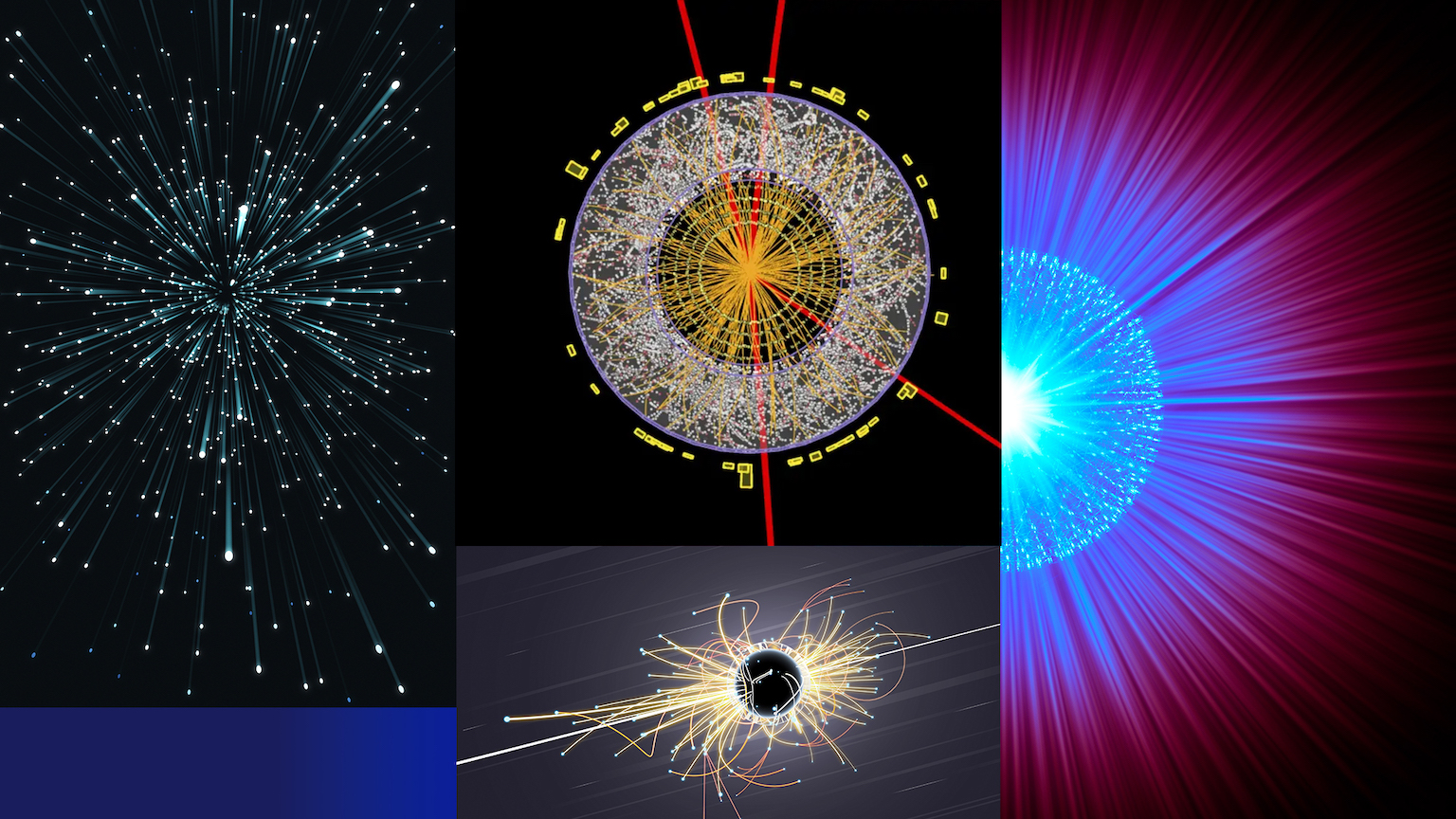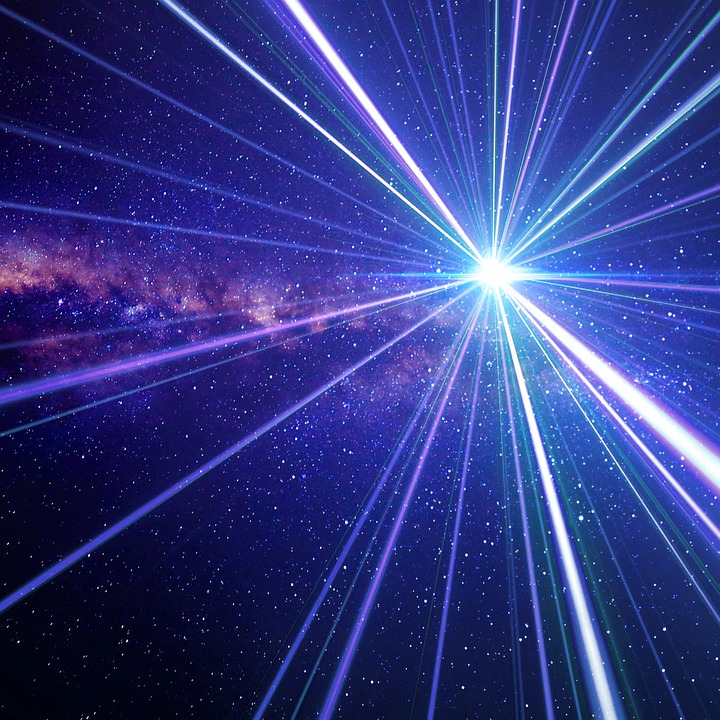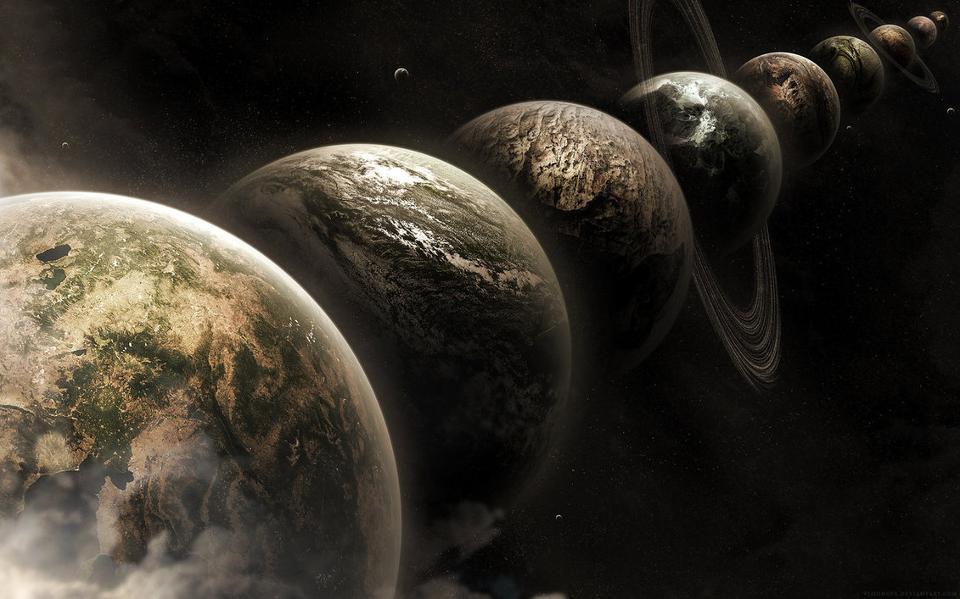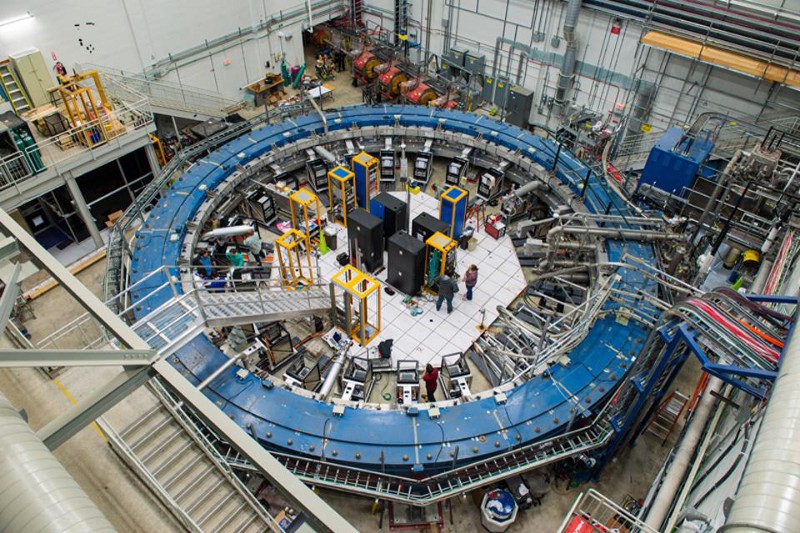What ‘Star Trek: Discovery’ Gets Right (And Wrong) About Parallel Universes: Season 1 Episode 10
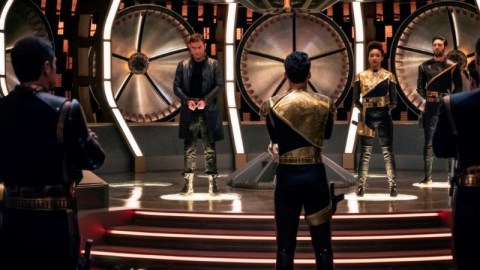
Last week, the crew found themselves in the mirror Universe. Here’s what science has to say about that.
Star Trek: Discovery entered their midseason hiatus on a terrific cliffhanger: they had destroyed the Klingon ship-of-the-dead, taken L’Rell prisoner, learned the secrets to the Klingon cloaking device, alterinh the tide of the war, and accidentally jumped to an unknown location. So where are they? The surprising answer is in another Universe entirely. The 10th episode of Star Trek: Discovery takes the series and its characters where no one has gone before, and it makes for a riveting story.
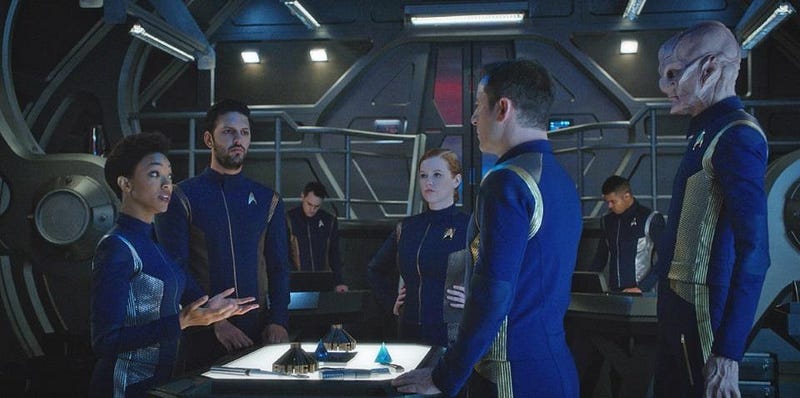
Recap: The Discovery scans their location, confirming they’ve arrived at their new coordinates as planned, but that nothing else is where it needs to be. Vulcan ships attack them; the Federation never came to be, as humanity grew into the Terran Empire instead; and the humans on the show discover tremendously different roles for themselves than the ones they held in their own Universe. It’s a horrifying, fun-house-mirror look into the darkest depths of their own souls. They find themselves in the “mirror Universe,” the same one that the original Star Trek (as well as the Enterprise) crew encountered. They have to get back, because they haven’t yet delivered the code to crack the Klingon cloaking device to Starfleet.
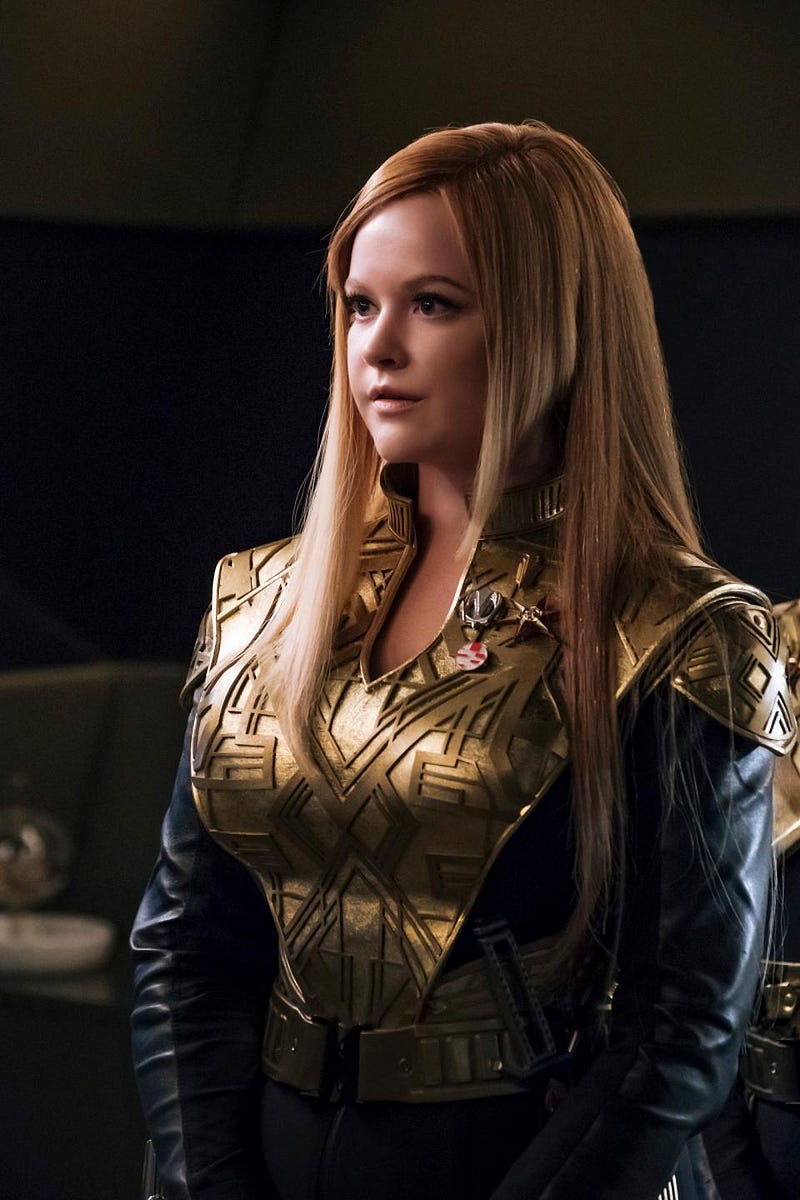
Mirror Universe Discovery is not captained by Lorca, who’s a rebellious traitor looking to stage a coup, but by Tilly, who’s become a murderous, ambitious player in the Terran Empire. Burnham was presumed dead, possibly even killed by Lorca, but had been captain of the Shenzou before that, which is now commanded by (former ensign) Connor. The crew figures out, by looking at the ship’s records, that the Terran Empire is an oppressive, racist (pro-human) regime that’s ruled by a nameless, faceless emperor. And they end every conversation with scarily authoritarian salute, with full-on accompanying arm gesture, “Long live the empire!” If you were reminded of the Nazi scene from Apt Pupil, you’re not alone.
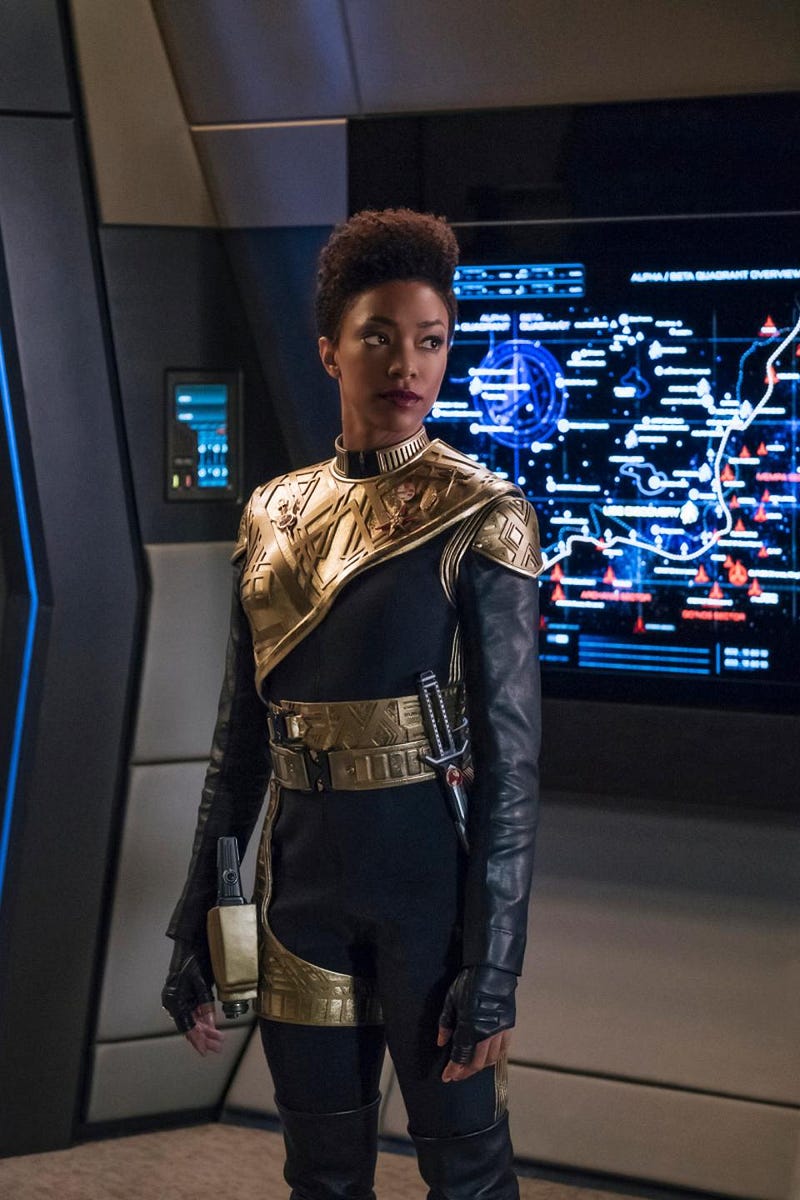
Here in the mirror Universe, the way you rise to power is through violence. You have to kill to survive, and inspire fear to gain respect. “U.S.S.” is replaced by “I.S.S.” in the mirror Universe, but all the people are the same. Although the two timelines diverged at some point in the late 21st century, everyone who exists in the main Star Trek timeline also exists here. In a nod to the original series, they have records of the USS Defiant appearing in the mirror Universe timeline, and cheekily have Lorca pose as Captain Tilly’s chief engineer, complete with scottish accent.
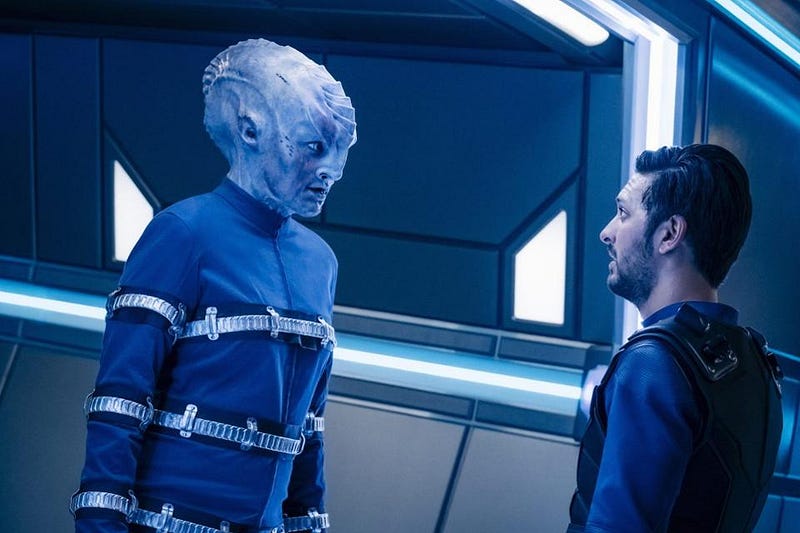
Finally, it’s revealed that Ash Tyler has a Klingon background, and a strong connection with L’Rell. Tyler’s physiology and personality have both been altered, including a changing of his bone structure, physical appearance, and mind. The theory that Tyler is really Voq in disguise has some serious legs now, and that should be the default position on Tyler, who’s suspiciously omitted from mentions of the Terran Empire’s records.
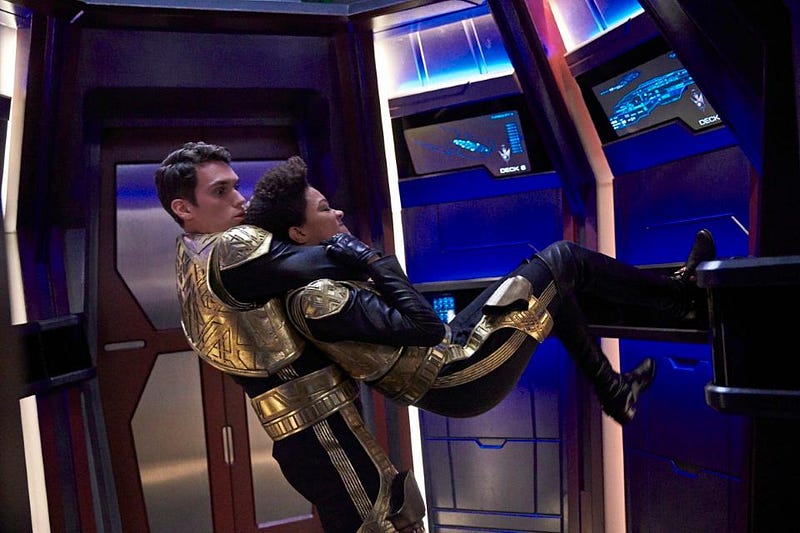
The problem is, in order to survive and find a way home, you have to fit in and succeed in this Universe. The episode ends with a sample of what life in the mirror Universe is like. Burnham and Tilly behave like fearsome bruisers, with direct threats to murder anyone who challenges their authority. Connor resists Burnham’s return, and is killed by her in a brutal hand-to-hand knife fight, reminiscent of Burnham and Georgiou’s ill-fated battle in the series’ pilot. With Lorca as prisoner and Burnham in command, Discovery now controls the Shenzhou as well. In a twist at the end, Tyler, losing control of his mind and his actions, snaps Culber’s neck. Stamets’ premonition that “the enemy is here” now has a clear meaning: Tyler is a Klingon agent.
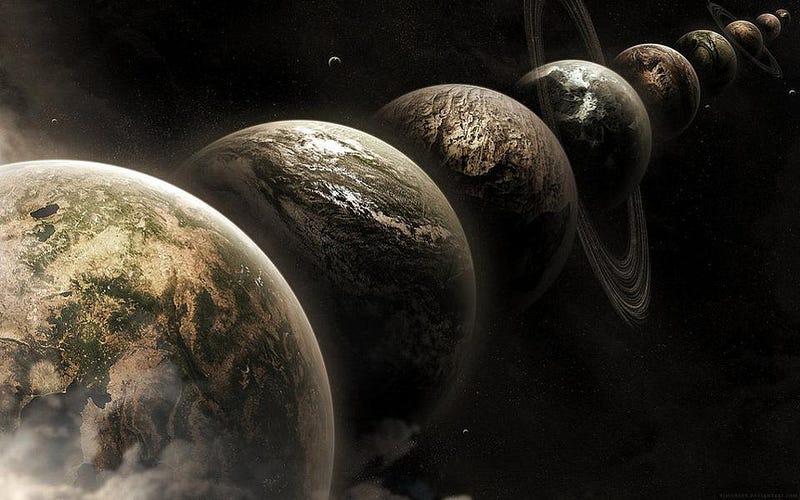
The Science: In this episode, the concept of parallel Universes is all the rage. The idea dates back to a particular interpretation of quantum physics: the many-worlds interpretation. In quantum mechanics, if you start with a system in a particular configuration and let it evolve, its outcome won’t be predictable with 100% certainty. Instead, there are a set of possible outcomes, and a set of probabilities associated with those outcomes, weighted by likelihood. Until there’s an interaction (i.e., you make a measurement or observation) that determines which outcome took place, you cannot be certain what the outcome was.
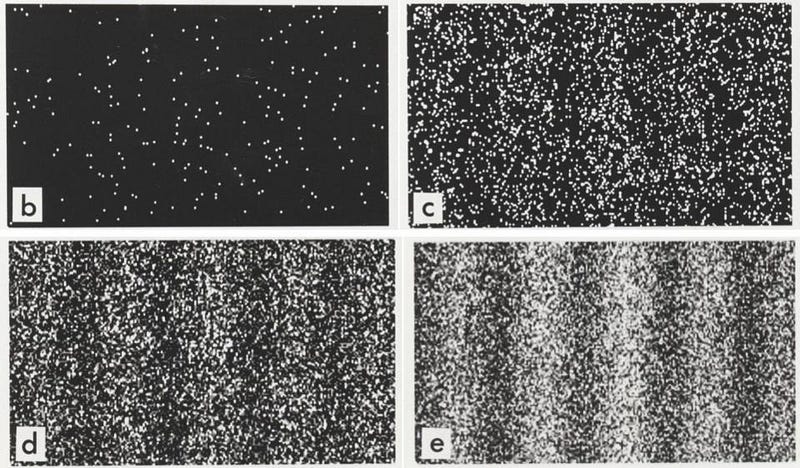
Traditionally, this “quantum weirdness” is dealt with by considering the system as a probability wavefunction, and the act of measurement/observation causes the wavefunction to instantaneously collapse. But in the many-worlds interpretation, there are an arbitrarily large number of parallel Universes for every possible outcome to actually occur, somewhere. The act of measuring simply determines which Universe you’re actually living in. Whether this interpretation describes our reality is an open question in theoretical physics, one which many researchers actively pursue even today.
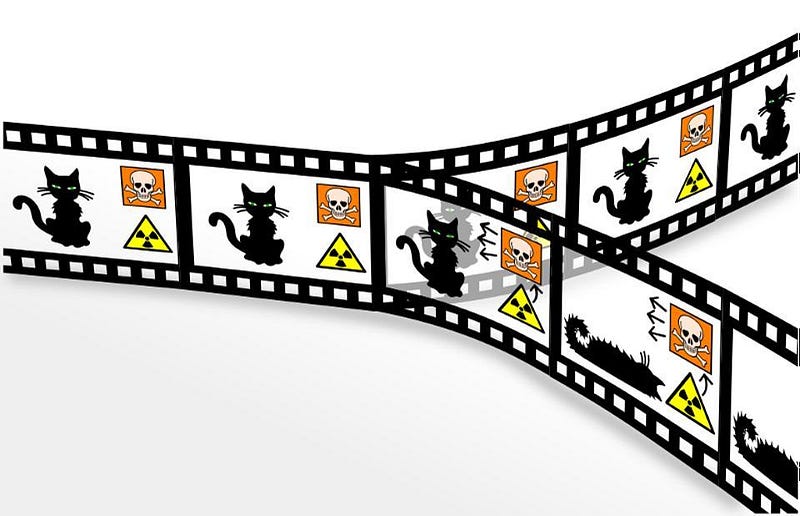
Let’s assume we want this to be true: we want parallel Universes to exist. Theoretically, it’s plausible for this to actually reflect our reality. If the unobservable Universe, the portion of the Universe that’s beyond what we can access due to the finite (in time) nature of the Big Bang, is big enough, then somewhere, there will be another Milky Way, another Sun, another Earth, and another you and me. If there are enough chances and opportunities for the Universe, with the same laws and rules, to turn out exactly like it did for us. If, say, cosmic inflation went on long enough to create enough space, it’s possible that there’s a Universe for every possible outcome for everything that could have ever happened in our galaxy.
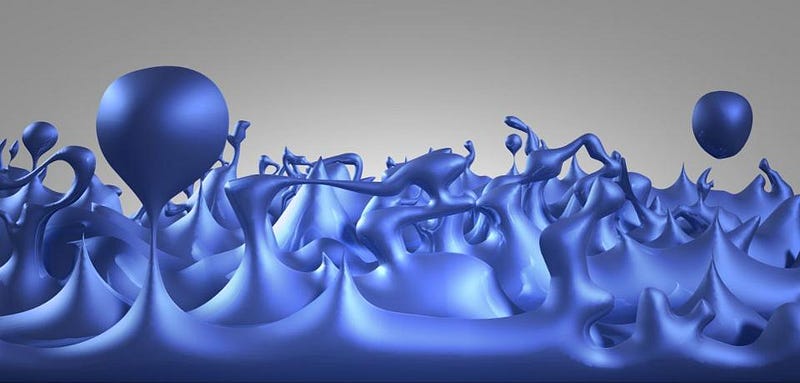
If you can poke holes in spacetime, where you enter in one location and exist in another, you can get a wormhole, or an instantaneous way to transport from one disconnected location to another. This was how the wormhole to the gamma quadrant worked in Deep Space 9, and it’s how the spore drive works in Discovery. Now, combine that idea with the parallel Universe idea, and the conjecture that spacetime itself is a fundamentally quantum entity. When you poke a hole in spacetime, what if you don’t necessarily wind up back in your own, original Universe?
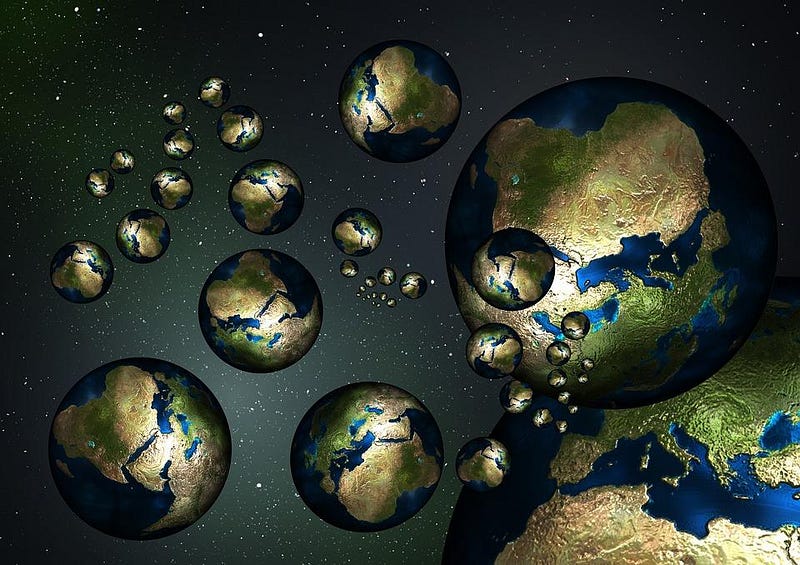
It’s speculative, but there isn’t anything we know of that forbids the existence of a wormhole to a parallel Universe. Discovery’s remarkable journey to this mirror Universe, however unlikely, has plausibility behind it.
But not everything is plausible. The odds that you’d always go back-and-forth to the same parallel Universe is absurd, as two timelines that diverged hundreds of years ago would be less closely connected than ones that diverged much more recently. The idea that matter would have a “different quantum signature” in one parallel Universe versus another is laughable, as the only quantum signatures that matter has are determined by the fundamental constants. If those were different, they wouldn’t be parallel Universes at all, but alternate realities. And the idea that the same people would all exist, would crew the same ships, etc., even with hundreds of years of differences to build on, is wildly unlikely. (It would be like drawing, “1, 2, 3, 4, 5, and 6” as the winning lottery numbers for ten weeks in a row.)
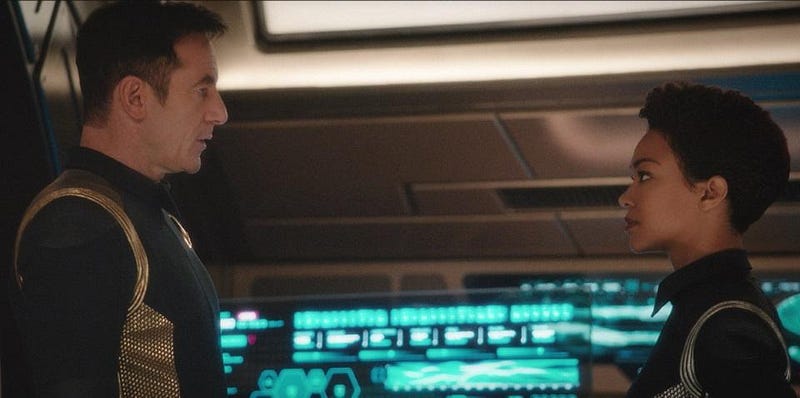
Still, the notion of traveling to, being stuck in, and attempting to leave a parallel Universe has a lot of science behind it. Star Trek: Discovery deals with it in a plausible-enough way that I’m mostly satisfied. The one thing that niggles at me, though, is that of all the likely-and-unlikely outcomes that could happen, that so much is the same between these two Universes, from the people to their experiences and personalities to the ships. It makes me think that Lorca, who sees this as a signpost for destiny (Burnham doesn’t), may have logic on his side in this one.
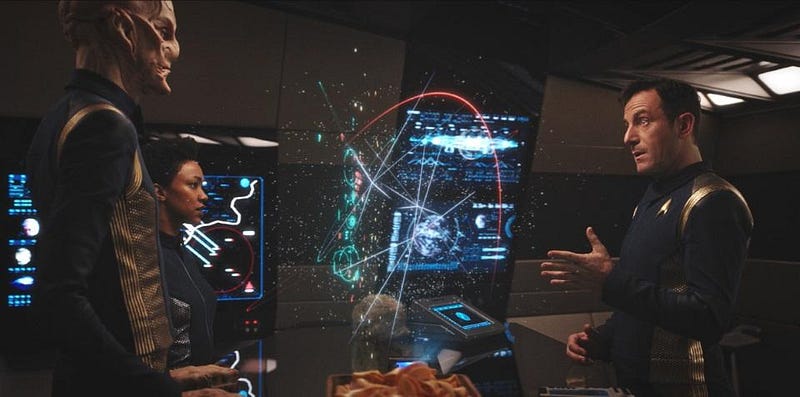
Right and Wrong: How do you choose what the ethical move is in a Universe where compassionate behavior is punishable by death? It’s a classic conundrum: that one must choose violence, harm, and even murder, just for the chance to do some good in the Universe. But in choosing so many evil actions, at what point do those actions simply define who you are, and what kind of person you are? It’s the kind of ethical question that Star Trek is famous for asking and addressing, and an element that has been sorely missing from Discovery, up until now. Kudos to director Jonathan Frakes (whom you’ll best know as Commander Riker) for bringing this out so thoroughly in this episode.
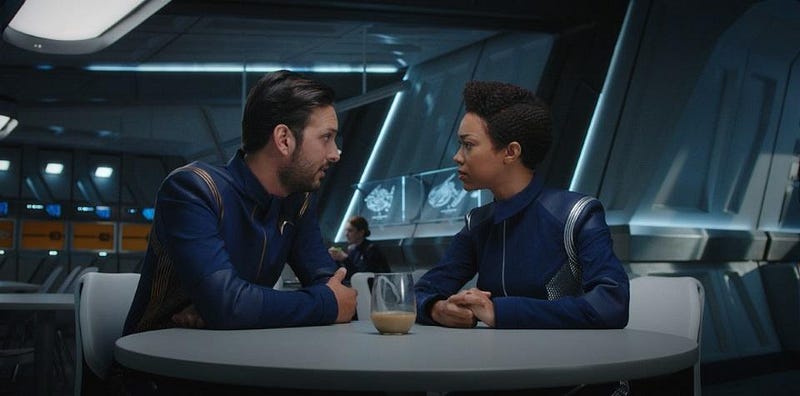
This same ethical conundrum arises in very different circumstances when it comes to Tyler and L’Rell. Assuming that Tyler is Voq, he’s willingly undergone a complete physical and mental transformation: he’s become a human named Tyler, but the original “Voq” lives on underneath. What rights does the persona of Tyler have, and how “real” is he, versus Voq? And even despite the murder of Culber, is there some sort of “greater good” that we would identify as “good enough” that would justify these actions in our minds? It’s interesting to view the parallels between Burnham’s and Tyler’s actions and reactions, and to look for, for lack of a better term, the humanity in our Klingon foes.

There’s also the big question of a very particular value schism that’s playing out in America (and the world) right now: whether you value diversity or purity in your group. Whether those of different religions, races, appearances, heritage, etc., are welcome as an equal, or viewed as unwelcome outsiders or even enemies. In the mirror Universe, practically every non-human race, including the Vulcans, Andorians, and Klingons, has banded together in resistance against the pro-human Terran Empire. It’s a timely, welcome theme that I’m betting recurs many times over in the coming episodes.
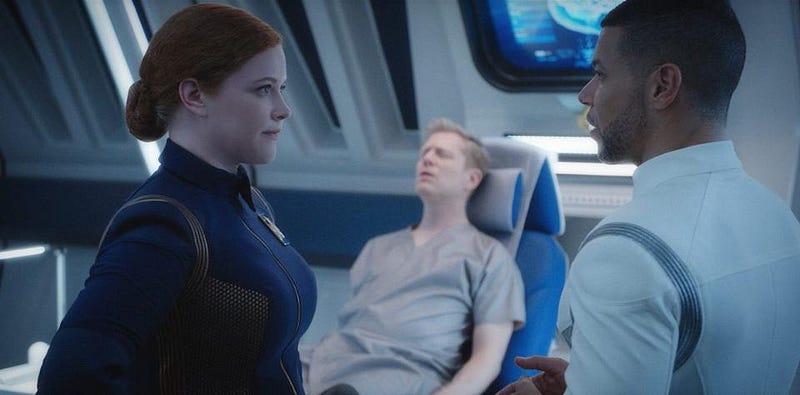
Conclusion: I’m going to start with this: if Jonathan Frakes directed every episode, I would be immensely happy and have tremendous faith that Star Trek: Discovery will be among the all-time great series in sci-fi. The mirror Universe, in many ways, is exactly where the Discovery’s crew belongs, allowing them to confront a reality that exposes them to their own darkness. Lorca will pretty clearly have to grapple with his own questionable ethics, from the inconsistent ways he’s dealt with Burnham and the (now-dead) Culber to the damaged Stamets to Admiral Cornwell.
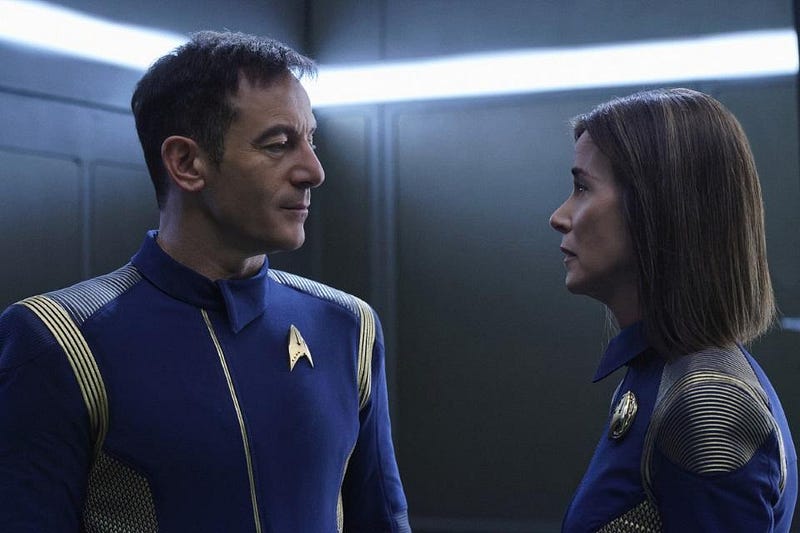
And speaking of Cornwell, there are plenty of secondary characters that you have to wonder about. What’s Admiral Cornwell doing in this Universe? What about Philippa Georgiou? And the original Admiral from the pilot: Brett Anderson, what’s he up to? Who rules the Terran Empire? And what will acting like murderous thugs do to the crew; will they become what they abhor, or will they rethink how they view and interact with their enemies?
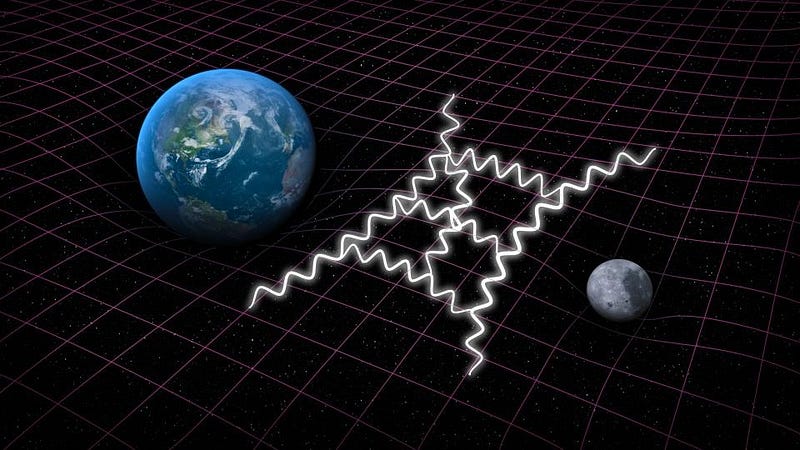
I’m pleased that they’re remaining in the mirror Universe, that they’re wrestling with difficult ethical questions, holding a mirror up to humanity today, and working towards a sci-fi framework that’s plausible and relatable. The tenth episode of Star Trek: Discovery, “Despite Yourself,” may go down as the turning point where this new series finally comes into its own.
Ethan Siegel is the author of Beyond the Galaxy and Treknology. You can pre-order his third book, currently in development: the Encyclopaedia Cosmologica.

